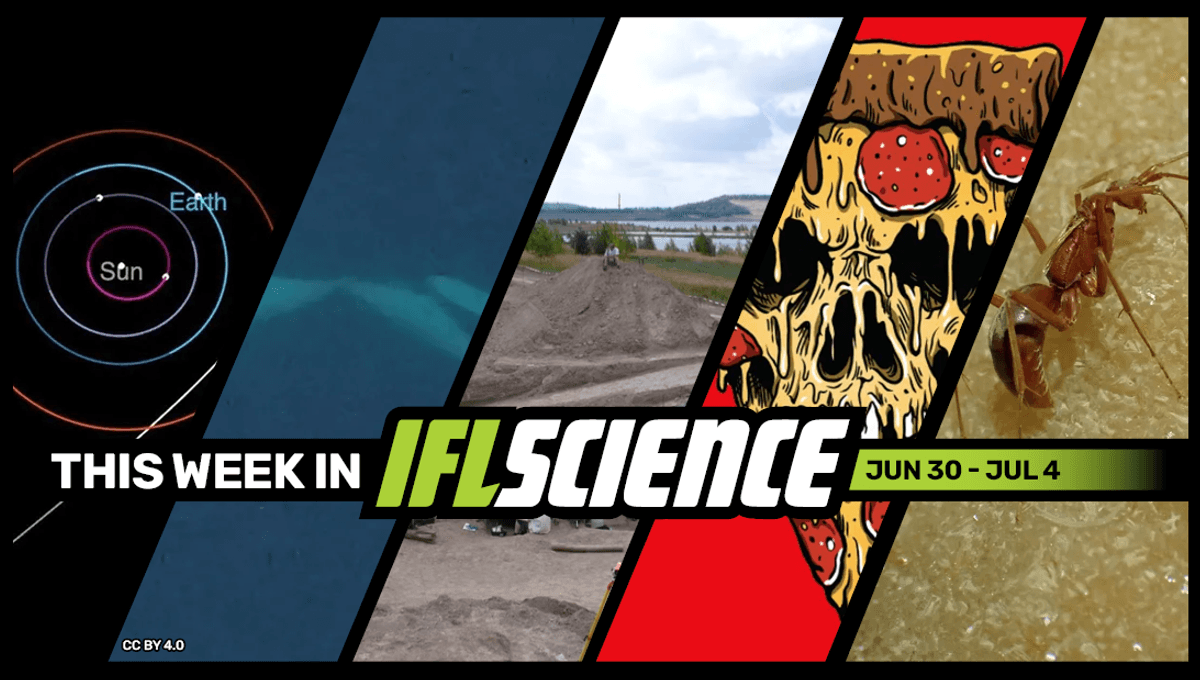
This week, a 125,000-year-old Neandertal “fat factory” reveals that they gorged on energy-packed bone grease, a new study has found that there really is a link between eating cheese and having nightmares, and scientists were stunned to find a cave full of mummified, never-before-seen, eyeless invertebrates. Finally, in 2032, Earth may witness a once-in-5,000-year event on the Moon.
Create an IFLScience account to get all the biggest science news delivered straight to your inbox every Wednesday and Saturday.
Confirmed! Comet 3I/ATLAS Is Indeed An Interstellar Visitor, Quite Different From Its Predecessors
On July 1, the ATLAS (Asteroid Terrestrial-impact Last Alert System) survey telescope reported the discovery of A11pl3Z, an object whose orbit looked like it came from another star. Now we know that this is indeed the case. The interstellar object has been given the name 3I/ATLAS, and we now know it’s a comet. Read the full story here
Orcas Filmed Kissing (With Tongues) In The Wild For The First Time
Despite having a reputation for strategically hunting marine mammals and occasionally sinking yachts in the Mediterranean, it has now been revealed that orcas have a more romantic side. After drones recently revealed they enjoy giving each other kelp massages, new research has since shown that they like to kiss, with tongues. Read the full story here
125,000-Year-Old Neanderthal “Fat Factory” Shows They Gorged On Bone Grease
Grease is the word – at least, it was for Neanderthals living in what is now Germany some 125,000 years ago. New research shows that our extinct cousins collected huge quantities of animal bones at a dedicated “fat factory”, where they intensively processed them to extract bone grease, adding vital nutrients to their diet. Read the full story here
Love Cheese But Hate Nightmares? Bad News, It Looks Like The Two Really Are Related
An after-dinner cheese board? Can’t beat it. Silly little knives, fruity little chutneys, and mounds of glorious cheese, but the evening can take a turn when it’s time to go to sleep and the nightmares come knocking. Now, a new study has found that it could all come down to intolerances and allergies. Read the full story here
“I Wasn’t Prepared For The Sheer Number Of Them”: Cave Of Mummified Never-Before-Seen Eyeless Invertebrates Amazes Scientists
A team of researchers, together with cavers in Australia, have crawled their way quite literally into a treasure trove of new invertebrate species. Many of the new-to-science species, which include spiders, cockroaches, centipedes, and even a wasp, exhibit cave adaptations such as eyelessness and were found mummified and perfectly preserved within the Nullarbor cave system. Read the full story here
TWIS is published weekly on our Linkedin page, join us there for even more content.
Feature of the week:
In 2032, Earth May Witness A Once-In-5,000-Year Event On The Moon
An asteroid discovered last year and briefly thought to be a threat to Earth has a one-in-23 chance of hitting the Moon, according to NASA estimates based on JWST data. A new paper outlines how this could be a spectacular one-in-5,000-year event, potentially ejecting material towards Earth. Read the full story here
More content:
Have you seen our e-magazine, CURIOUS? Issue 36, July 2025, is available now. This month we asked, “How To Fake A Fossil” – check it out for exclusive interviews, book excerpts, long reads, and more.
PLUS, the We Have Questions podcast – an audio version of our coveted CURIOUS e-magazine column – continues. In episode 8, we ask, “Why Does Snow Sometimes Look Blue?”
The Big Questions podcast has returned, and we’re continuing season 5 with episode 2’s big question: Are We Living Through A Sixth Mass Extinction?
Source Link: We’ve Found Our Third-Ever Interstellar Visitor, Orcas Filmed Kissing (With Tongues) In The Wild, And Much More This Week